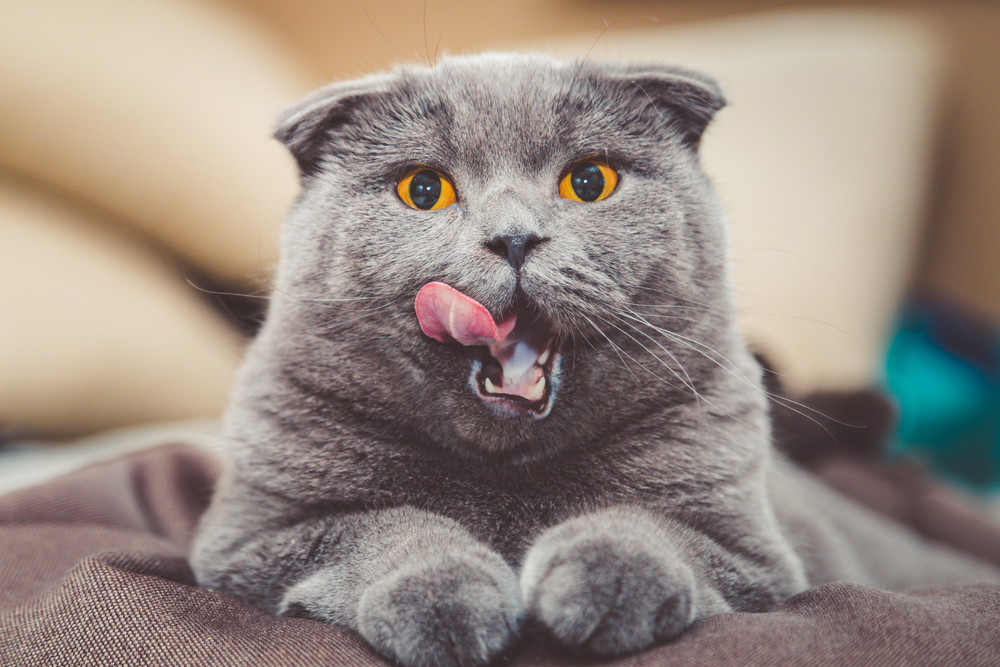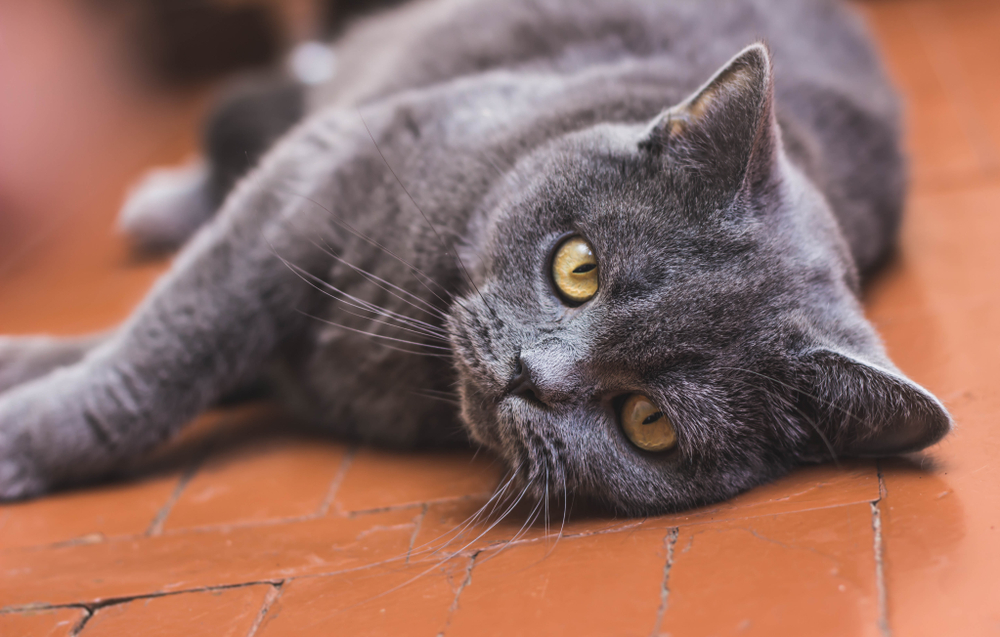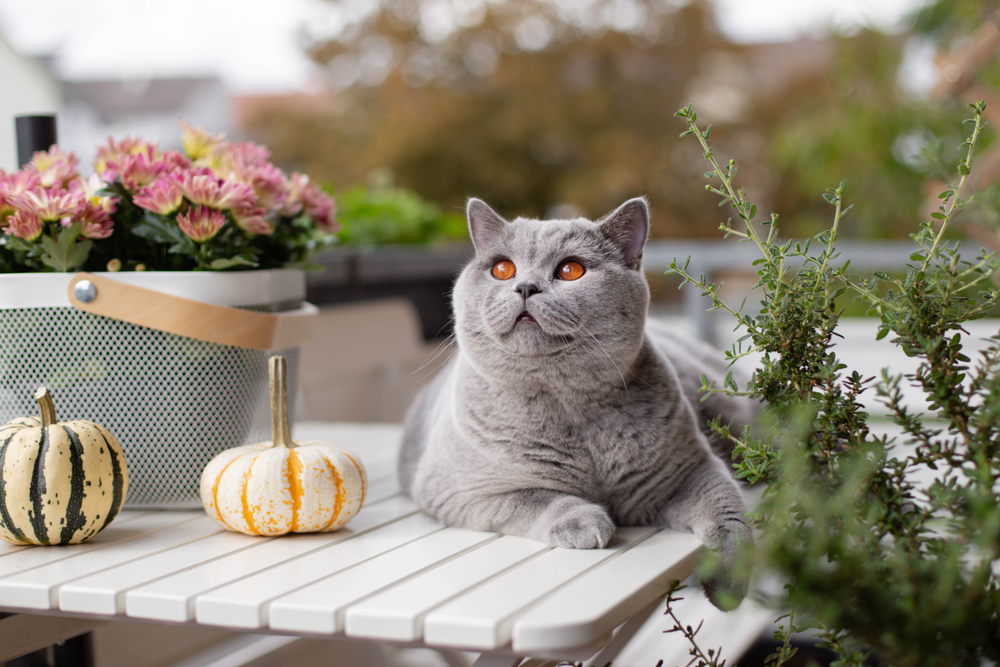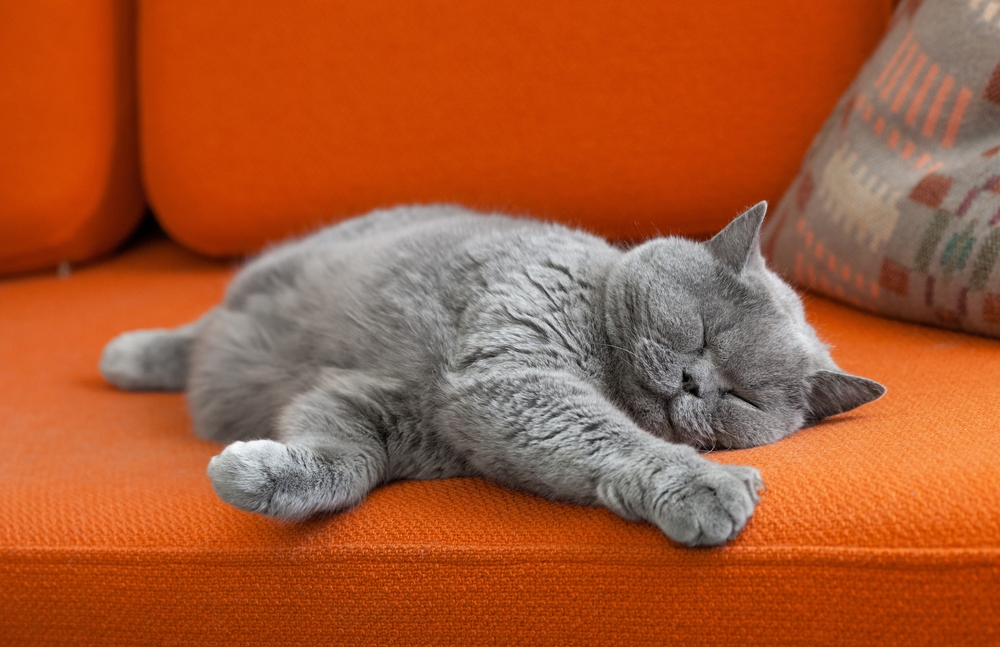When you’re on the hunt for a fluffy friend that resembles your favorite teddy bear, you might think breeds with luscious locks like Maine Coons, Ragdolls, and Ragamuffins are the way to go. With adorable almond-shaped eyes, fluffy paws, and perked-up ears, you can’t go wrong with either of the three.
But you might not be aware of the breed that managed to get the “teddy bear of the feline world” title because of the uncanny resemblance. We’re referring to the Blue British Shorthair, of course.
Because British Shorthair cats are soft, rounded, and freakin’ blue, they’re often mistaken for cartoon characters and children’s toys.
British Shorthair cats are one of the oldest breeds out there and we’re not surprised they’ve managed to become one of the most popular ones, too. With chubby, fluffy bellies, friendly faces, and British humor, British Shorthair cats make for the purrfect pets – not to mention that they’re almost always blue.
Where do we even start? British Shorthair cats are considered an ancient breed, direct descendants of the cats brought to England by Romans when they were trying to conquer the country.
Roman cats were brought to England to fight off pests, but the friendly cats started mating with street and farm cats they encountered on the way.
When Englanders noticed how calm and confident these cats were, they didn’t think twice before they started bringing them into their homes and onto their laps.
While Roman cats didn’t look like the British Shorthair cats we know today, they’re rumored to have developed round faces and soft, silky coats over time.
Around the 1800s, a breeder by the name of Harrison Weir wanted to create a cute, cuddly breed that would appeal to British royalty and nobility. He started crossing different felines trying to get the features he thought would be appealing.
He entered a cat show held at London’s Crystal Palace in 1871 with a blue tabby British Shorthair and won.
He might have been the first to come close to the purrfect British Shorthair, but the breed we know today was perfected after World War I by adding Russian Blue, Persian, French Chartreux, and domestic shorthair cats into the mix.
Finally, around the 1970s, the British Shorthair cat was accepted as an official breed by the CFA (Cat Fanciers’ Association) and TICA (The International Cat Association).
Nowadays, British Shorthair cats are defined by short, soft coats, rounded bodies, and chubby cheeks. They can assume almost any color or pattern, but the ones that attract the most attention are blue and gray.
They can have almost any eye color, too, but the blue and gray ones come with bold orange-amber eyes.
There’s no question that British Shorthairs or British Blues are one of the boldest and most beautiful breeds out there, but that doesn’t mean that they’re boring or bleek. That’s the thing with these teddy bears – they’re perfect because they’re affectionate, appreciative, and friendly, too.
They’re great with humans and they’re more than happy to spend most of the day following them around, playing with them, and hanging out with them. They’re tolerant of little humans, too, but they’re known to run away when they’re overwhelmed or overstimulated.
They’re calm and collected, but they’re energetic, too. They can spend hours and hours playing with toys, running around the backyard, or hopping from one cat tree to the other. British Shorthair cats are sort of a combination of every cat ever – they’re laid back, loyal companions, and super, super sweet.
What do Blue British Shorthair cats need to have a happy and healthy life? Worry not, these purr machines aren’t high maintenance.
When you get your hands on a British Blue, you might think you’re going to need to spend thousands and thousands of dollars on toys, cat trees, expensive treats, and trips to make them happy.
But these fluffers are pretty straightforward – they’re happy when they’re with you and they’re getting the attention and affection they crave. They don’t care whether they have the best bed, the most advanced litter box, or the most expensive cat tree.
They’re satisfied when they can spend most of the day hanging out with you, napping when they’re tired, and munching on paw-licking foods when they’re hungry. They’re a happy medium between playing fetch and napping on the floor.
They’re equally happy when they’re watching Netflix with you and when you’re walking them on a leash – we’d go as far as to argue they’re the perfect balance between a cat and a dog.
Not to mention that they’re blessed with the softest coat that doesn’t shed which means they’re the closest to a hypoallergenic cat you can get.
Now, you can pamper them as much as you want. But you don’t have to – you can get away with brushing them once a week, bathing them when they get really, really dirty, and taking them to a vet now and then for a checkup.
Before you think to ask “Why would I take them to a vet when they’re healthy,” regular checkups are essential – no questions asked. British Blues are a healthy breed, but they’re sometimes susceptible to conditions such as hypertrophic cardiomyopathy, urinary tract infections, and kidney issues.
Getting your British Shorthair from a reputable breeder can prevent future health problems, but you’re better safe than sorry. Feeding them healthy, protein-packed foods, providing them with plenty of physical activity, and showing them affection on a regular can do the trick, too.
What do you think – do British Blues deserve the “teddy bears of the feline world” title? We’re obsessed with them for a million reasons and we can’t get over the fact that everyone’s favorite Puss in Boots might have been a British Shorthair! All the more reason why you should get your hands on one, too!



